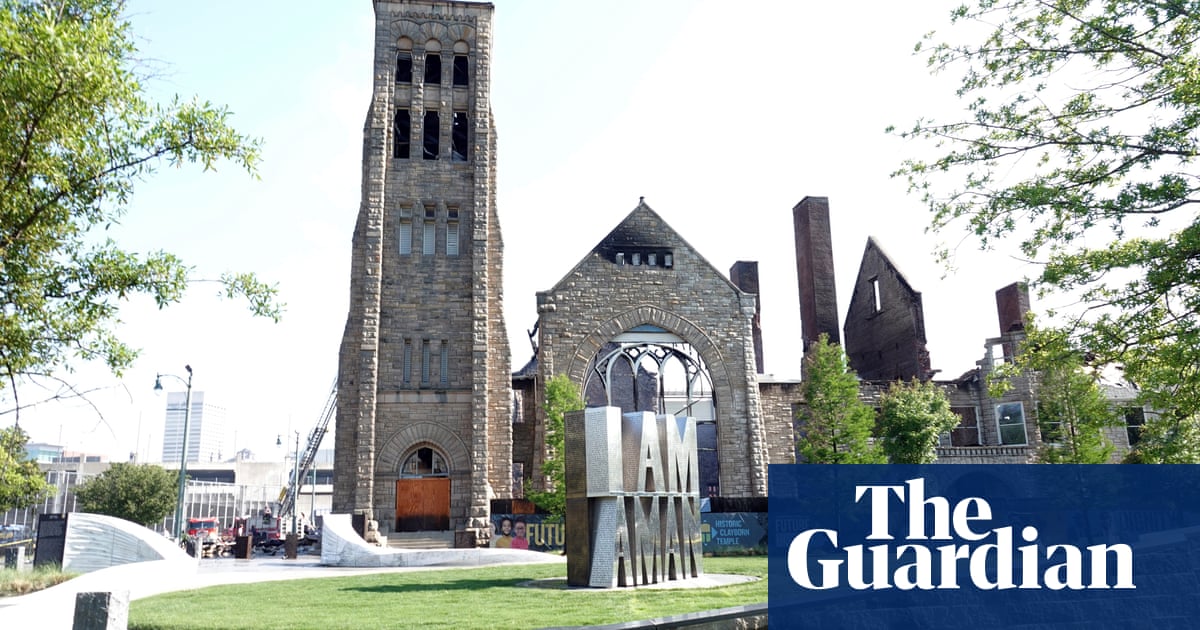A fire has severely damaged the historic Clayborn Temple in downtown Memphis, which is closely associated with the US civil rights movement and DrMartin Luther King.
The temple was headquarters for the sanitation workers’ strike that brought King to Memphis in 1968. The campaign’s “I Am a Man” signs were made in the church’s basement, according to the temple’swebsite.
In 2018, it was designated a national treasure by the National Trust for Historic Preservation.
TheMemphisfire department chief, Gina Sweat, said at a news conference that the department received a call at about 1.30am local time on Monday morning through a commercial alarm.
The blaze was largely contained within an hour, she said, but there were still some hotspots so firefighters will remain on site working throughout the day.
The temple had “sustained significant damage”, Sweat said, calling it a “devastating fire”.
“Due to the significant damage, we could not go inside the building at that point, so we’re having to fight the fire, the rest of it, from the outside,” she said.
Investigators from the fire department, police and the Bureau of Alcohol, Tobacco, Firearms and Explosives (ATF) were working to determine the cause of the fire.
“This is going to take some time due to the significant damage to the structure,” she said. “It’s still an active investigation and we’re working diligently and thoroughly.”
Sweat described Clayborn Temple as “sacred and significant to our entire community”.
Memphis’s mayor, Paul Young, said in astatementthat the fire had “ravaged one of our city’s greatest treasures”.
“Clayborn is more than a historic building,” Young said. “It is sacred ground. It is the beating heart of the civil rights movement, a symbol of struggle, hope and triumph that belongs not just to Memphis but to the world.
“Standing in the shadow of that steeple, generations of Memphians found their courage,” he said. “Today, in the face of this tragedy, we must find ours once again.”
He said: “We grieve deeply for what has been lost, but we also stand ready to honor Clayborn’s legacy the only way we know how: by coming together to restore, rebuild, and remember.”
The National Civil Rights Museum also released astatement, describing the temple as a“symbol of organized resistance and hope during the 1968 sanitation workers’ strike”.
“When marchers filled its sanctuary, it wasn’t just about better wages; it was about dignity, about declaring that Black lives and labor mattered in a city that often acted indifferent,” the statement read.
“In the years since, despite cycles of neglect and efforts at preservation, Clayborn Temple remained a powerful reminder that in the face of obstacles, violence, and hatred, collective action and faith can build something stronger.”
King’s eldest son, Martin Luther King III,saidhe was “deeply saddened by the devastating fire that destroyed the historic Clayborn Temple in Memphis”.
He said: “Clayborn was the starting point for the sanitation workers’ march where my father stood and helped lift up the words ‘I Am a Man’ to the world.
“The flames that consumed Clayborn Temple cannot erase its legacy as sacred ground. We honor its history and we are committed to supporting efforts to rebuild this cornerstone of the civil rights movement.”
According to local newspaperthe Commercial Appeal, the temple had been undergoing years of renovations to preserve its structure.
